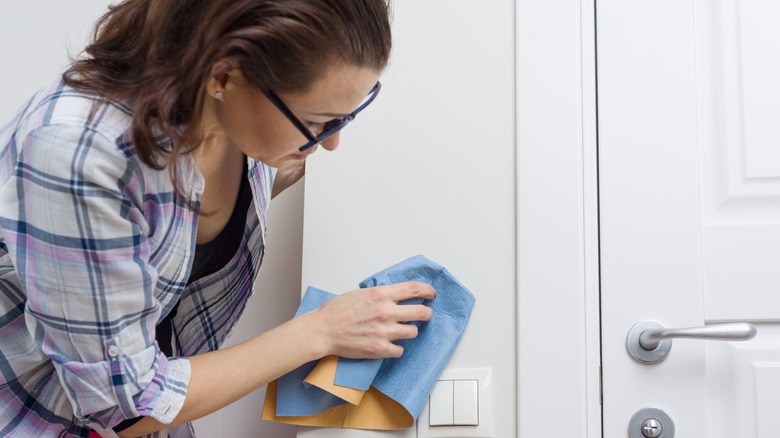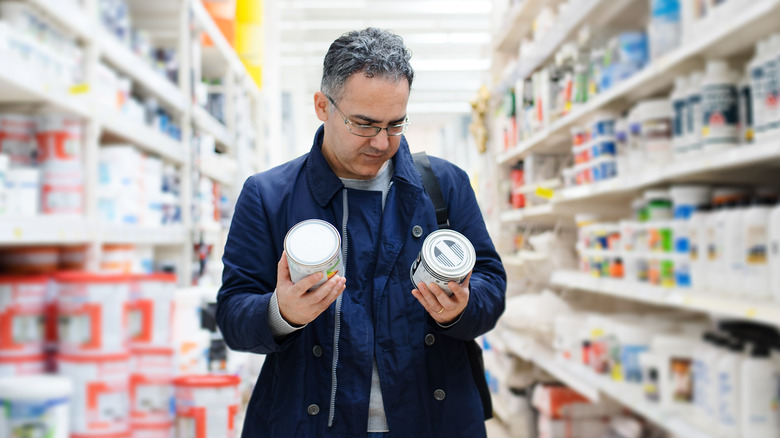What To Do If A Pesky Bug Lands On Your Fresh Paint Job
After spending weeks agonizing over paint colors, you've finally landed on your top pick, moved all your furniture out of the room, and spent a day painting. And then — as it dries — an insect flies right into your handiwork. One theory is that some insects seem to be attracted to paint – some paints give off a pheromone that draws them in. Another, according to Talk Painting, is that paint can be easily mistaken by flies as food. If you do end up with a bug in your fresh paint, it's recommended to let it dry before removing it.
Depending on where you live, such as in the countryside, bugs might just be an inevitable pest to deal with. However, as countless painters' forums will attest, no one is truly safe. Regardless of what causes the attraction, the bottom line is that finding insects in a fresh paint job is incredibly frustrating. Removing them will cause an uneven paint job. Leaving them, on the other hand, means running the risk of only partial removal once everything does dry. So, what's a desperate painter to do?
Let it dry, then wipe it out
Sure, leaving a bug in wet or tacky paint doesn't guarantee a smooth removal, but most experts tout it as the best way to deal with the sticky situation. However, there is a right way to go about it. And no, that doesn't entail pulling the bugs off the wall and calling it a day. Rather, dampen a cloth or sponge with soapy water, rub the cloth over the area, and the insects should be removed relatively easily. In a similar vein, you can try following the same method with mineral spirits, however, if your paint job was done with latex paint, you don't want to use mineral spirits on that.
While wiping bugs out is generally pretty a effective way to save your brand-new paint job, if you're still not happy with the outcome, you can also go for a more intense approach. Gently sanding the area down does wonders for getting a smoother finish. Then, re-paint the affected area. In order to get everything truly smooth, though, you will need to re-paint the full surface — so be mindful that this isn't exactly a quick and easy fix.
Opt for a water-based paint
If you've decided you need to re-paint, you'll still need to keep the area ventilated, and there's no guarantee another critter won't settle in your second attempt. The solution? Pick a paint that cuts down on drying time. Most experts recommend using water-based, latex paint to make it less likely to have bugs or any debris like sand, stick to the freshly painted surface. The logic behind that is simple – water-based paint dries faster. Granted, that doesn't mean bugs won't still settle on it, however, it gives them less time to do so.
The really great thing about latex paint, though, is that it can be used over oil paint — which is good news if you started out with oil. Just be sure to completely sand down that original paint job first, then coat it with a latex primer. Or, in the event of that first oil-based layer being particularly shiny, Hillis Brothers Painting recommends using KILZ primer. It's not the fastest route, but it's worth a shot if those bug marks are too much to bear.


